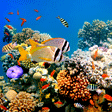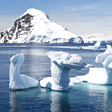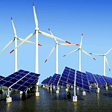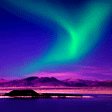- Home >
- Our Actions >
- Ambassador report
2
Comments
[March Free Report] What are the mudflats? |
|---|
|
by Wooyeong Kim | 31-03-2023 23:58
|
|
The Korean peninsula has many particular regional advantages, and one of those is—Mudflat. Mudflat is a wide, flat wetland by the sea where the tide flows in and out. Most mudflats in Korea are distributed along the west and south coastline of the peninsula about more than 4000km. They have several merits for the environment and ecosystem. They can absorb carbon in the atmosphere and purify the water, and also play a role in the habitat of migratory birds. In 2021, Unesco inscribed four mudflats in Korea as World Natural Heritage sites. Jongseong Kim, a professor of Earth and Environmental Science at Seoul National University, evaluated the worth of mudflats as above ten billion dollars annually because of their ecological and economical values. However, mudflats in South Korea have been demolished with exponential speed as consequences of reclamation and urban development. In other words, now you can rarely find them in some regions that have numerous populations to live in. Specifically, the area of mudflats in Gyeonggi-do—the capital region— has decreased from 1180 square kilometers to 167 square kilometers in only 30 years! Against this dangerous situation, some local communities realized the significance of mudflats and have started to protect them by several purification activities such as collecting garbage in the ocean. By participation of most citizens in those towns, they could collect trash over 30 tons. To revive and preserve the mudflat ecosystem, Nakdong River estuary mudflat restoration project was initiated. In this project, the removal of accumulated sediments and pollutants on the mudflats could help restore the ecosystem in the mudflat, and finally could provide a significant habitat for diverse species. Those precedented efforts have shown the possibilities of revival and protection of mudflat. It is urgent to be attentive to the mudflats problems from the government and the local communities. |
|
|










 Previous : [March Free Report]Bringing ba...
Previous : [March Free Report]Bringing ba...









2 Comments
Hello Wooyeong! This is your mentor James!
First of all, so sorry for the late comment!
I see that you have introduced our very special biosystem, the mudflats! I live not so far from the west coastline, so I frequently visit beaches that have mudflats. I also have heard about the decreasing trend of the overall area of those regions, which is such a tragedy. Not only should the government protect the mudflat ecosystem, but we should also contribute to the restoration process by cleaning up mudflats and respecting living organisms within the system.
Thanks for the meaningful report! Looking forward to reading your next one!
Posted 05-05-2023 14:52
Hello Wooyeong! This is your mentor Yewon!
You have written a report about mudflats in Korea! Even though I live in Korea too, I have never been to mudflats yet. However, I learned that mudflats give habitats to various living organisms, and also I heard that Migratory birds relax in the mudflats!
I'm glad that Unesco inscribed mudflats as World Natural Heritage sites because the government will be more active in protecting this region! Hopefully, efforts like the Nakdong River estuary mudflat restoration project will help protect mudflats and wildlife living there!
Thank you for sharing!
Posted 01-04-2023 01:13